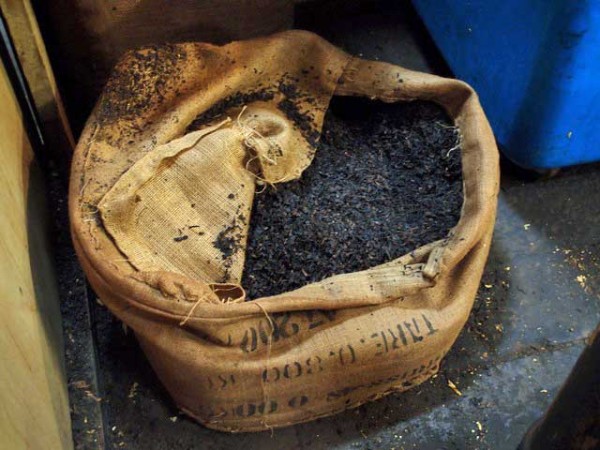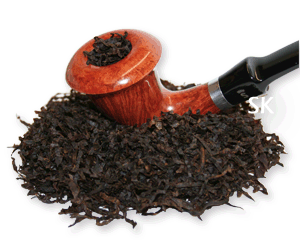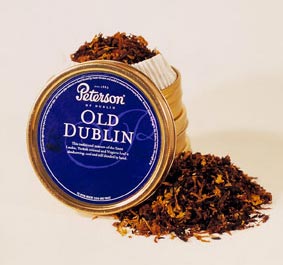In my blogpost “Latakia Lover” I described Syrian latakia. What I did not tell was that nowadays it is an almost extinct type of tobacco.
For years Syrian latakia had been used in cigarettes and pipe tobacco. But it was taking its toll on the Syrian environment. Native hardwood and shrubs were used to fire-cure the shekk-el-bint leaves. Unfortunately there weren’t much farmable grounds in the area. Because of this natural resources were being used and consumed FAST. Also during the period 1850 – 1950 extreme damage to the forests in Syria was done. First by the construction of the Baghdad and Hedjaz railways, both were still operated with wood for fuel during WWI. Later from the ravages of WWII during which forest fires were purposefully set as a protest against the controlling foreign regime. So the Syrian government decided to place a moratorium (a what?? A delay or suspension of an activity) on the production of latakia in 1960. “But I smoked Balkan Sobranie and other mixtures which contained Syrian latakia in the 60’s and 70’s!” some of the old pipe smokers would say. Yes that is true. Most tobacco companies had hoarded the stuff so it was only around the beginning of the 80’s that they ran out of it. Some mixtures survived this by gradually switching from Syrian to Cyprian latakia.
 Somewhere during the 80’s the Syrian government lifted the moratorium and to some extent the production was resumed. But it never came close to the amounts of the pre-1960 era. The demand was lower because there were less pipe smokers. On top of that Syrian latakia had to compete with the dark leaf that came from Cyprus. Also a lot of the experienced processors had found another job. As a result the quality of latakia made by other makers became shaky, inconsistent.
Somewhere during the 80’s the Syrian government lifted the moratorium and to some extent the production was resumed. But it never came close to the amounts of the pre-1960 era. The demand was lower because there were less pipe smokers. On top of that Syrian latakia had to compete with the dark leaf that came from Cyprus. Also a lot of the experienced processors had found another job. As a result the quality of latakia made by other makers became shaky, inconsistent.
Luckily at the beginning of the 2000’s a LOT of vintage Syrian latakia became available. So tobacco companies like MacBaren, McClelland and Cornell & Diehl (which includes GL Pease) bought vast amounts of it. Especially mr. Pease succeeded in making excellent blends with it like Renaissance, Raven’s Wing, Mephisto and Bohemian Scandal. Unfortunately at the end of 2004 the warehouse where the Cornell & Diehl / GL Pease Syrian latakia stock was located burned to the ground. That ended of course all the mixtures in which the Syrian dark leaf was used. But the other tobacco manufacturers that bought into the same batch of vintage Syrian latakia were able to secure their stock. This because their supply was located elsewhere. So those companies still have their part and probably it will last for years, it was a lot. But eventually they will run out of it. And it looks like no more Syrian dark leaf is being made because of the relatively low demand, environmental issues and the ongoing civil war.
Here I quote mr. Pease himself. A question was asked him if the pipe tobacco industry, latakia specifically, been affected (pricing, quality, or availability) by the current situation in Syria: I spent some time on the telephone with the major oriental leaf broker in the US to get a definitive answer to this question, and it’s not a happy one. The simple fact is that Latakia has not been grown and manufactured in Syria now for over ten years. What there is of it in warehouses is all there is, and very likely, is all there ever will be. The vintage leaf that we lost in the fire was very, very special. A couple of manufacturers still have some supplies of that leaf, but when it’s gone, it’s gone. Further, I’ve tasted a lot of blends claiming to contain Syrian Latakia, but you couldn’t prove it by me. It’s possible that they’re adding a few shreds of the stuff in order to stay within the letter of any laws that may exist, but their overall flavor and aroma is clearly that of Cypriot leaf. I cannot speak to the blends produced by most manufacturers, but I’ve had conversations with friends at McClelland and MacBaren, and can say without a doubt that they are, indeed, using vintage Syrian Latakia where they claim to be, so if you enjoy the blends they’re making with it, you’re still in luck, at least for the time being. But, enjoy it while it lasts; when it’s gone, it’s gone.
 Of course I will be missing some but blends that still contain (or are claiming it contains) Syrian latakia are:
Of course I will be missing some but blends that still contain (or are claiming it contains) Syrian latakia are:
– None, there are no blends left with a considerable amount of the real Syrian dark leaf. Perhaps there are blenders who still have some shreds left, mix them with a huge load of Cyprian latakia and call it Syrian, I don’t know. It surely will not taste like original Syrian.
See my list of updates below for more information.
EDIT 07-04-2013: I heard from a very reliable source that German tobacco producers Kohlhase & Kopp and DTM (both also producers of HU Tobacco) sadly no longer have Syrian latakia. Because of this I have removed all HU tobacco and Kohlhase & Kopp (Ashton and Solani) blends from the list.
EDIT 04-11-2014: On the 2014 Inter Tabac fair I spoke with Mr. Per Jensen of MacBaren. I was wondering how long the Syrian latakia stock of MacBaren would last that they use for their excellent HH Vintage Syrian. Mr. Jensen very honestly answered that he guessed that in about 7 or 8 years they would run out of the Syrian dark leaf.
EDIT 07-11-2014: I just heard from Paul that on the Inter Tabac Fair he had spoken to one of the two export managers of Planta with whom he has a good connection. He asked him if Planta’s Syrian latakia really contained Syrian latakia. The export manager answered that they still had Syrian stock but that they were not able to buy any more in the last years. How long their supply will last? No idea…
EDIT 08-08-2015: I just read at the Pipes Magazine forum that someone spoke with Per Jensen of MacBaren at the IPCPR and there he said their Syrian stock would last for about 4 years..
EDIT 22-09-2015: Apparently sales of MacBaren’s HH Vintage Syrian are going well. I spoke with Brian Levine on the Inter Tabac some days ago and according to him they will run out of Syrian leaf in about 2 or 3 years. After that the blend will be discontinued. I also dared to ask him if small amounts of Cyprian latakia are mixed with the Syrian dark leaf (there were some rumours..). A resolute “no” followed. Only the size of the tins had changed (from 100 gr. to 50 gr.), nothing else.
EDIT 30-01-2017: From the Facebookpage of Ted Gage: “Syrian tobacco is gone. Used up, done, and gone forever. There will be no McClelland Syrian Three Oaks, or other blends using the supply of McClelland Syrian. Bummer, but we knew it was coming eventually.” In a short while I will remove their blends of the list. For now: stock up folks!
EDIT 12-03-2017: After a discussion with one of the great names in the pipe smoking world I have decided to remove MacBaren HH Vintage Syrian from the tobacco list. There were rumours before that MacBaren was mixing amounts of Cyprian latakia with the Syrian dark leaf. I already had suspicions some time ago but choose to believe the MacBaren folks and ignore my taste buds. The “great name” with much better taste buds confirmed my old suspicions. There is a difference in taste between the old tins I have and new ones. Further I have deleted all tobaccos claiming to have Syrian latakia from my list. McClelland had the last real Syrian dark leaf and they have run out of it recently. All other companies who say they still have some stock are lying in my opinion or they have some left-over shreds that they put in the blends to stay within the boundaries of laws. Taste-wise you are not going to notice it. Blends simply sell better with the Syrian latakia label on them. So in short, the Syrian dark leaf is totally gone now. Don’t let anyone or anything fool you and oh, tobacco companies, be honest to your customers.
EDIT 29-03-2017: In my latest update I was jumping to conclusions too fast about MacBaren’s HH Vintage Syrian. I should have done my homework (like I normally always do) first. On the PipesMagazine forum a discussion erupted about that I solely relied on the taste buds of my anonymous expert and myself without any further proof. Then Per Jensen, product manager of MacBaren. chimed in. Here are the most important excerptions:
I normally don’t comment on rumours coming from an anonym source, but I will make an exemption in this case. In 2006 I created the HH Vintage Syrian as a single standing tobacco. Since the first making of this blend the recipe has not changed, it is still made after the 2006 recipe with Syrian Latakia.
If you compare an older tin with a new one, the taste of the older will of course be slight different due to age. If a pipe smoker perceives this as the newer tin contains a lesser quality tobacco, I would consider this to be a genuine mistake. The HH Vintage Syrian is created like no other Latakia blend, because it also contains Dark Fired Kentucky. In comparison with more “normal” English blends, you will, as pipe smoker, experience another taste in HH Vintage Syrian as in your favourite English blend. HH Vintage Syrian is not your typical English blend and there are so many other good blends out there which will satisfy your taste for Latakia. HH Vintage Syrian was created to be different.
However, no matter this discussion HH Vintage Syrian will be leaving soon, as our supply of Syrian Latakia is coming to an end. Latest in February or March next year the last of the HH Vintage Syrian will leave Svendborg, Denmark, so the guy who created it will also be the one to put it down. That HH Vintage Syrian is leaving us, I have stated over and over again, and I have never made it a secret that it would disappear and also when.
Of course my expert and I discussed this. We really tasted something different in the newer tins as opposed to the older ones, and it was not the dark-fired Kentucky because that has been in all along. Besides, there are other latakia blends with dark-fired Kentucky, see this list. My expert missed the distinctive resiny, pine-like aroma that the Syrian latakia once gave the blend and that is not present in the current tins. But he did detect the sweeter, earthier, more camp-fire and leather smell and taste of its Cyprian cousin. Suddenly he came up with something: What if MacBaren was not using the same Syrian batch as in the beginning, the same batch Cornell & Diehl and McClelland also bought? It could be that they ran out of that batch some time ago and acquired a different Syrian latakia from some leaf broker. That way there is still Syrian in HH Vintage Syrian, it could explain the difference in taste and Per would be telling the truth. So I mailed Per that theory and kindly asked him for an honest answer. Which I got:
First of all I want to inform you that of course I stand behind my statement on pipesmagazine.com. As I have mentioned time after time during the years we would be out of Syrian Latakia latest in 2019 to 2020. The reason that we stop the production already in beginning of 2018 has more reasons than one. First our stock is lower than predicted 7 years ago and second we had to destroy some of the Latakia because it did not live up to the standard we demanded.
At the time when rumours started about the shortage of Syrian Latakia, we contacted our vast network of tobacco suppliers to hear if they could help us obtaining Syrian Latakia. We managed to get 6 batches from different sources, some small but 2 of batches were bigger. Since then we have blended the different Latakia from Syria in order to get an even taste. At present time the rest of the Syrian Latakia we have is blended out of only 2 different batches where we in the past blended at least 4 different together.
So yes, we have been using different batches in HH Vintage Syrian and in February 2018 the book of Syrian Latakia will be closed.
So there was a difference after all. In the first years the same batch that Cornell & Diehl and McClelland also bought was used and later on various batches from different sources were mixed together. Of course we don’t know if those leaf brokers who sold MacBaren their later Syrian latakia offered the real stuff. For example, in his Cyprian or Syrian? (Part II) blogpost well known master-blender GL Pease says (amongst other things) this: Since The (warehouse) Fire, there have been more than a few samples of “Syrian Latakia” arriving in my postbox from various suppliers. Some have been no more Syrian than I am. Others have been of such low quality I wouldn’t use the stuff to smoke fish. But for now I am going to give HH Vintage Syrian the benefit of the doubt. I can’t research it any further. Regardless which latakia from whatever quality is used, it is still an excellent smoke.
I want to thank Per Jensen for his honest answers and my anonymous expert for his knowledge and expertise.
EDIT 05-01-2018: At the end of last year MacBaren master-blender Per Jensen discontinued his HH Vintage Syrian blend as can be seen in one of his Instagram posts. So I removed it from my list.











